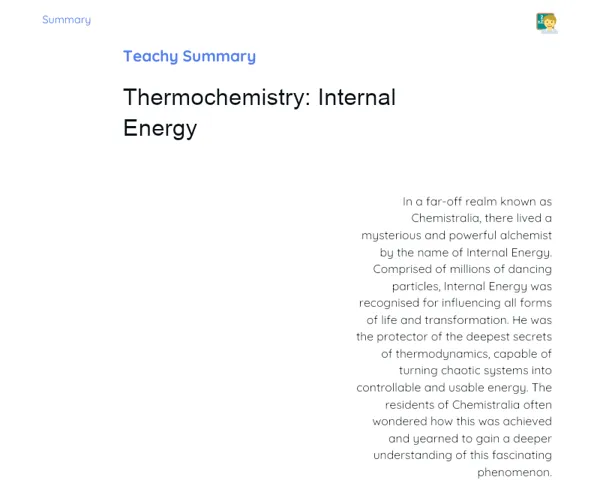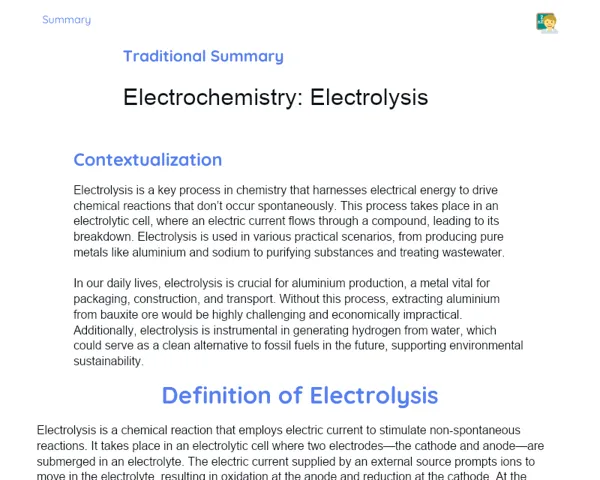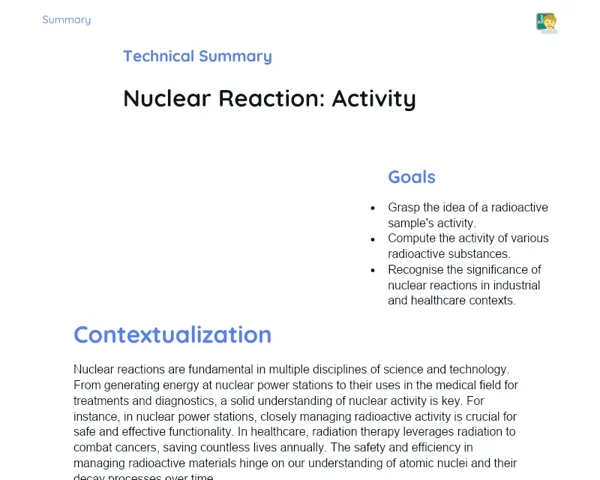Goals
1. Identify the key properties of nonmetals.
2. Locate nonmetals in the periodic table.
3. Differentiate between nonmetals and metals.
4. Recognise specific types of nonmetals, such as halogens.
Contextualization
Nonmetals possess distinct characteristics that differentiate them from metals and play a vital role in our daily lives. For example, oxygen is critical for breathing, while carbon underpins all organic life. By studying nonmetals, we gain insight into these elements and their practical uses in areas such as healthcare, technology, and environmental conservation. Understanding nonmetals and their placement on the periodic table is crucial for recognising their significance and applications across various sectors.
Subject Relevance
To Remember!
General Properties of Nonmetals
Nonmetals exhibit characteristics that clearly differentiate them from metals. They generally have high electronegativity and electron affinity, meaning they tend to accept electrons when forming compounds. Moreover, nonmetals are generally poor conductors of heat and electricity and have lower melting and boiling points than metals.
-
High electronegativity: Tend to attract electrons towards themselves.
-
High electron affinity: Easily acquire electrons.
-
Poor conductors: Do not effectively conduct electricity and heat.
-
Low melting and boiling points: Have lower melting and boiling temperatures compared to metals.
Location of Nonmetals in the Periodic Table
Nonmetals are primarily found on the right-hand side of the periodic table, with hydrogen being the exception at the top. They encompass elements in groups 14 to 18, with well-known members such as carbon, nitrogen, oxygen, and halogens like fluorine, chlorine, bromine, and iodine.
-
Right side of the periodic table: Groups 14 to 18.
-
Exception of hydrogen: Located at the top of the table.
-
Includes halogens: Fluorine, chlorine, bromine, iodine.
Differences between Nonmetals and Metals
Nonmetals and metals possess markedly different physical and chemical properties. Metals make excellent conductors of heat and electricity, usually exhibit a metallic shine, and are malleable and ductile. In contrast, nonmetals are poor conductors, lack metallic luster, and are typically brittle in their solid state.
-
Conductivity: Metals are good conductors, while nonmetals are not.
-
Luster: Metals have a shiny appearance, whereas nonmetals do not.
-
Malleability and Ductility: Metals can be shaped easily; nonmetals are generally brittle.
Practical Applications
-
Silicon, a nonmetal, is crucial in making microchips and semiconductors used in both computers and mobile devices.
-
Chlorine, a halogen, is used widely in treating water, ensuring access to clean drinking water.
-
Carbon, particularly in the form of graphite, functions as a lubricant and is also used in electrodes due to its conductivity.
Key Terms
-
Nonmetals: Chemical elements that typically gain electrons when forming compounds, characterised by their high electronegativity and electron affinity.
-
Halogens: A group of nonmetals found in group 17 of the periodic table, including fluorine, chlorine, bromine, iodine, and astatine.
-
Electronegativity: A measure of an atom's capacity to attract electrons in a chemical bond.
-
Electron Affinity: The energy released when an atom in the gaseous state accepts an electron to establish a negative ion.
-
Conductivity: The capacity of a material to conduct electricity or heat.
Questions for Reflections
-
How might our lives differ today without nonmetals, especially in crucial technologies like microchips and water sanitation?
-
What would the environmental and technological outcomes be if nonmetals like carbon and oxygen were absent?
-
How could understanding the properties of nonmetals shape your career aspirations in chemistry or related fields?
Investigating the Properties of Nonmetals
This mini-challenge involves a hands-on activity to deepen understanding of nonmetals and their practical uses. Students will conduct research and present their findings in a creative manner.
Instructions
-
Form groups of 4-5 students.
-
Select a nonmetal to research, such as carbon, nitrogen, oxygen, etc.
-
Investigate the main physical and chemical properties of the chosen nonmetal.
-
Identify at least three practical applications of this nonmetal across different sectors.
-
Prepare a multimedia presentation (this could be a poster, slide show, or a short video) to share your findings with the class.
-
Use visual elements and real-world examples to make your presentation captivating and informative.



